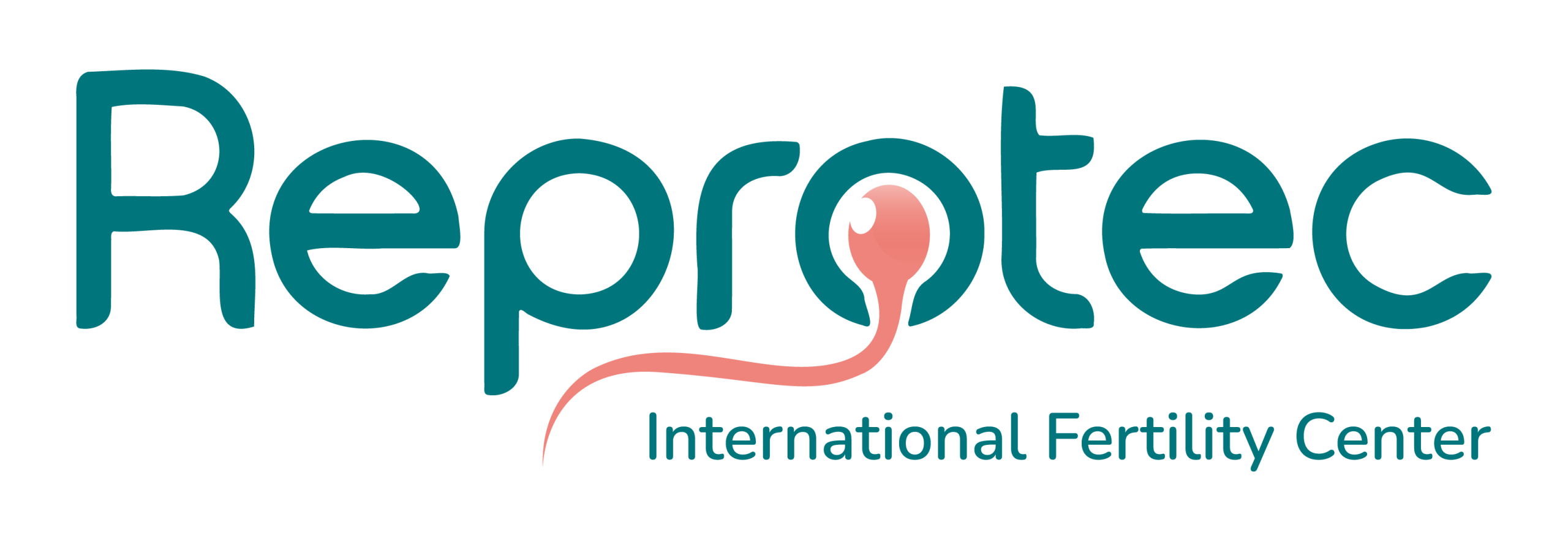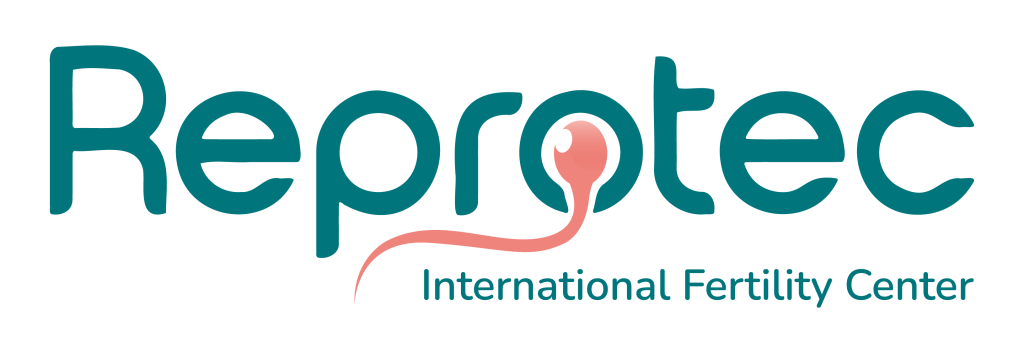In Vitro Fertilization (IVF)
This procedure is recommended in cases of:
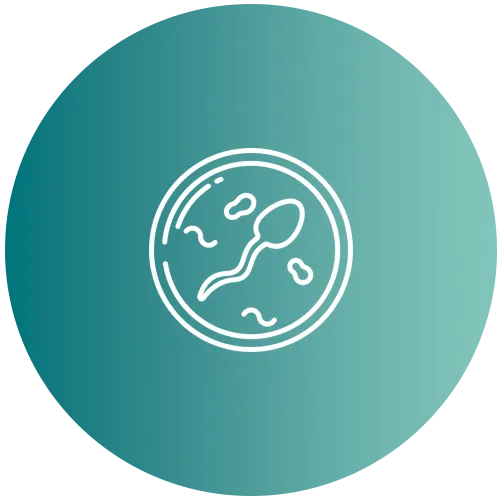
Male factor infertility
(abnormalities in sperm function).

Female factor infertility
(blocked fallopian tubes, endometriosis, ovulation disorders such as polycystic ovary syndrome).

Couples with unexplained infertility.

Male factor infertility
(abnormalities in sperm function).

Female factor infertility
(blocked fallopian tubes, endometriosis, ovulation disorders such as polycystic ovary syndrome).

Couples with unexplained infertility.
Step by Step: IVF Treatment
Ovarian Stimulation
For 10 to 12 days, the patient receives daily subcutaneous hormonal injections to stimulate the growth of the follicles containing the eggs. During this period, regular ultrasounds are performed to monitor the number and size of follicles. When the desired criteria are reached based on sonographic and blood hormone levels, a final trigger injection is administered with another hormone that induces final egg maturation.
Step 1Follicular Aspiration (Egg Retrieval)
This outpatient procedure is carried out under transvaginal ultrasound guidance 36 hours after the trigger injection, using a very fine needle to access the ovaries and extract the eggs from the follicles. It is performed under sedation in a procedure room next to the assisted reproduction laboratory to avoid any discomfort and pain.
Step 2Fertilization
In our embryology laboratory, the eggs are fertilized with a sperm sample previously selected in the andrology laboratory using a technique called sperm capacitation. This process is carried out under controlled sterile and environmental conditions by expert embryologists, who use security systems such as the Witness system to eliminate the risk of laboratory mix-ups.
Step 3Embryo Culture
The embryos are closely monitored in the laboratory to evaluate their development from the moment of fertilization, using advanced methodologies such as the Time Lapse system. Reprotec was the first to introduce this technology in Colombia through next-generation incubators called embryoscopes, which allow real-time monitoring of embryo development without removing them from the incubators for microscopic analysis. This technology provides significant advantages in selecting the best embryos for transfer or cryopreservation.
Step 4Embryo Transfer
In this painless procedure, one embryo is released in the uterine cavity using a very fine soft catheter, introduced vaginally under ultrasound guidance to ensure proper placement into the uterus. For this procedure, the only requirement is a full bladder for adequate ultrasound visualization of the uterus. Like egg retrieval, this is performed in procedure rooms next to the laboratory. It is a short and very exciting event that does not require recovery time.
Step 5Endometrial Preparation
Endometrial preparation ensures that the uterus is in optimal condition to receive the embryo. Several strategies are used, ranging from hormonal therapy (estrogen and progesterone) to the patient’s natural cycle, to thicken and mature the uterine lining (endometrium). Preparation usually lasts 12 to 14 days. This step is used for frozen embryo transfer, donor egg cycles, or preparing the uterus of the gestational carriers (surrogacy).
Step 6Pregnancy Test
The pregnancy test must be performed 13 days after embryo transfer. It is a quantitative blood test that measures the concentration of the pregnancy hormone (hCG), and the result will be communicated the same day by the treating physician
Step 7For 10 to 12 days, the patient receives daily subcutaneous hormonal injections to stimulate the growth of the follicles containing the eggs. During this period, regular ultrasounds are performed to monitor the number and size of follicles. When the desired criteria are reached based on sonographic and blood hormone levels, a final trigger injection is administered with another hormone that induces final egg maturation.
In this painless procedure, one embryo is released in the uterine cavity using a very fine soft catheter, introduced vaginally under ultrasound guidance to ensure proper placement into the uterus. For this procedure, the only requirement is a full bladder for adequate ultrasound visualization of the uterus. Like egg retrieval, this is performed in procedure rooms next to the laboratory. It is a short and very exciting event that does not require recovery time
The pregnancy test must be performed 13 days after embryo transfer. It is a quantitative blood test that measures the concentration of the pregnancy hormone (hCG), and the result will be communicated the same day by the treating physician.
Our high success rates are the result of carefully controlled processes adherence to strict protocols both clinical and in the lab and the support of advanced technologies such as Witness and Time Lapse, which ensure safety, accuracy, and comfort through continuous monitoring at every stage of treatment.
With this technique, you can maintain the possibility of having children with your own gametes, choosing the best time to do it.
Pregnancy rate in patients under 35 years of age
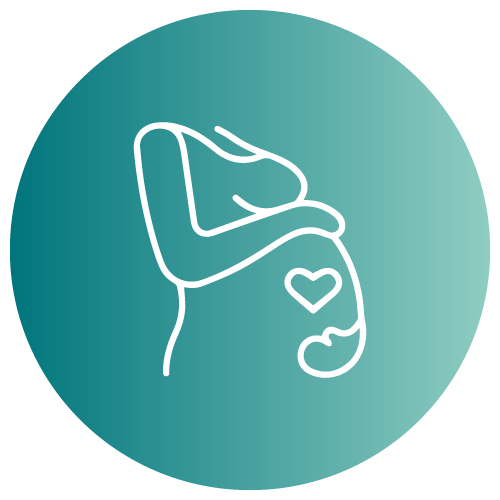
Pregnancy rate in patients with donated eggs
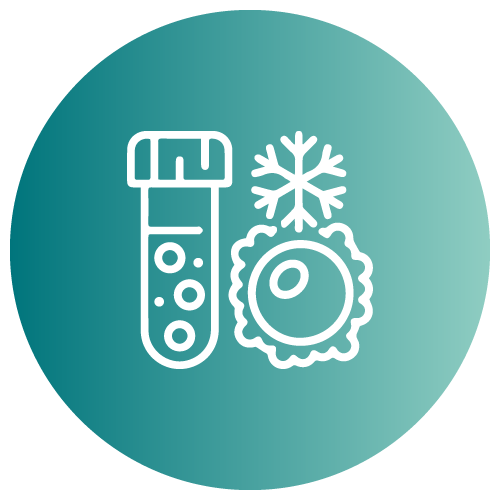
Pregnancy rate with normal embryo (Euploid)

With this technique, you can maintain the possibility of having children with your own gametes, choosing the best time to do it.
Pregnancy rate in patients under 35 years of age

Pregnancy rate in patients with donated eggs

Pregnancy rate with normal embryo (Euploid)

